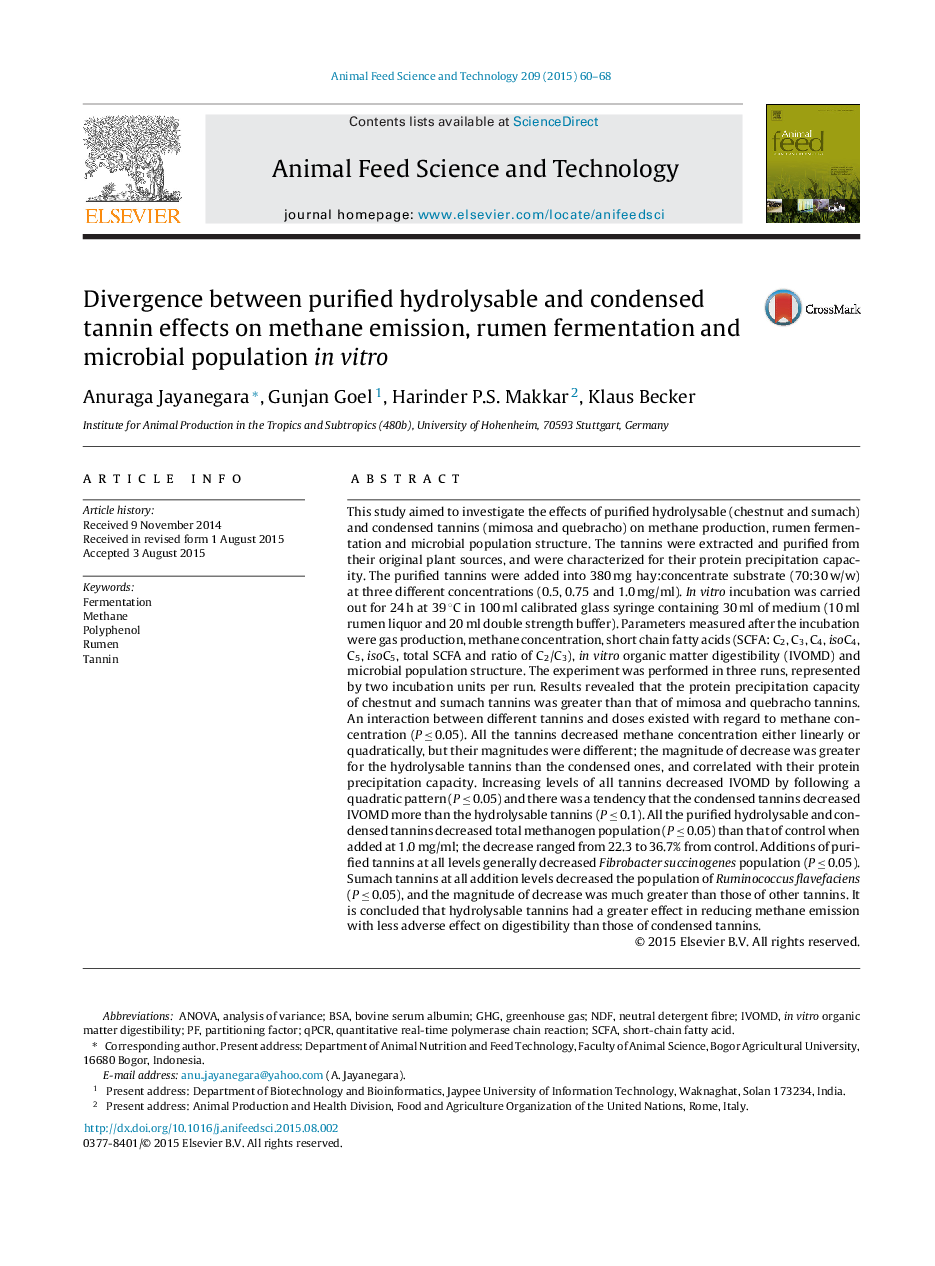| کد مقاله | کد نشریه | سال انتشار | مقاله انگلیسی | نسخه تمام متن |
|---|---|---|---|---|
| 2419371 | 1552376 | 2015 | 9 صفحه PDF | دانلود رایگان |
• Hydrolysable tannins decreased methane more than condensed tannins.
• Hydrolysable tannins had less adverse effect on digestibility.
• Methane mitigation was correlated to protein precipitation capacity of tannins.
This study aimed to investigate the effects of purified hydrolysable (chestnut and sumach) and condensed tannins (mimosa and quebracho) on methane production, rumen fermentation and microbial population structure. The tannins were extracted and purified from their original plant sources, and were characterized for their protein precipitation capacity. The purified tannins were added into 380 mg hay:concentrate substrate (70:30 w/w) at three different concentrations (0.5, 0.75 and 1.0 mg/ml). In vitro incubation was carried out for 24 h at 39 °C in 100 ml calibrated glass syringe containing 30 ml of medium (10 ml rumen liquor and 20 ml double strength buffer). Parameters measured after the incubation were gas production, methane concentration, short chain fatty acids (SCFA: C2, C3, C4, isoC4, C5, isoC5, total SCFA and ratio of C2/C3), in vitro organic matter digestibility (IVOMD) and microbial population structure. The experiment was performed in three runs, represented by two incubation units per run. Results revealed that the protein precipitation capacity of chestnut and sumach tannins was greater than that of mimosa and quebracho tannins. An interaction between different tannins and doses existed with regard to methane concentration (P ≤ 0.05). All the tannins decreased methane concentration either linearly or quadratically, but their magnitudes were different; the magnitude of decrease was greater for the hydrolysable tannins than the condensed ones, and correlated with their protein precipitation capacity. Increasing levels of all tannins decreased IVOMD by following a quadratic pattern (P ≤ 0.05) and there was a tendency that the condensed tannins decreased IVOMD more than the hydrolysable tannins (P ≤ 0.1). All the purified hydrolysable and condensed tannins decreased total methanogen population (P ≤ 0.05) than that of control when added at 1.0 mg/ml; the decrease ranged from 22.3 to 36.7% from control. Additions of purified tannins at all levels generally decreased Fibrobacter succinogenes population (P ≤ 0.05). Sumach tannins at all addition levels decreased the population of Ruminococcus flavefaciens (P ≤ 0.05), and the magnitude of decrease was much greater than those of other tannins. It is concluded that hydrolysable tannins had a greater effect in reducing methane emission with less adverse effect on digestibility than those of condensed tannins.
Journal: Animal Feed Science and Technology - Volume 209, November 2015, Pages 60–68
